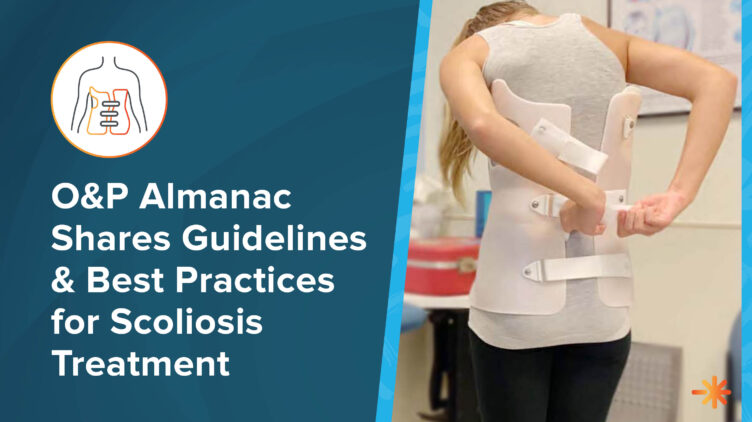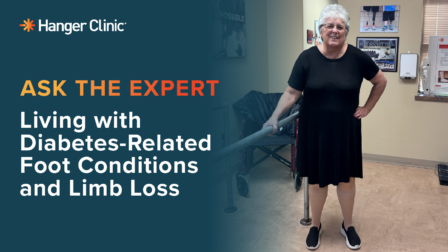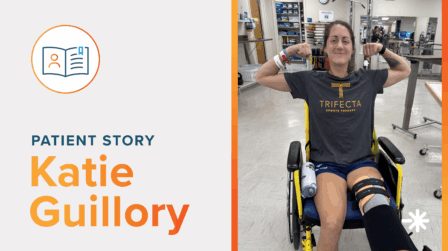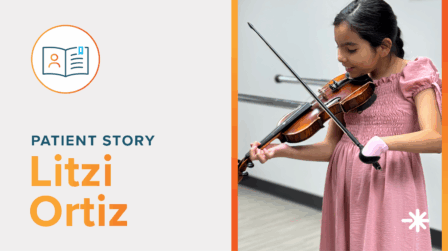O&P Almanac Shares Guidelines and Best Practices for Scoliosis Treatment

Recently, the O&P Almanac featured Hanger Clinic clinician and nationally recognized scoliosis expert Megan Chamis, MSPO, CO, and other clinicians to explore the various aspects of scoliosis bracing, including treatment approaches, patient experiences, technological advancements, and the importance of collaboration between healthcare providers and patients. During Scoliosis Awareness Month, we explore these best practices and guidelines for patient care.
Scoliosis, characterized by an abnormal sideways curvature of the spine, often requires intervention to prevent progression, especially in children and adolescents. Bracing plays a crucial role in this treatment journey, but it can be physically and emotionally challenging.
Treating scoliosis with orthotic braces presents unique challenges due to the impact on mobility and lifestyle, particularly for pediatric patients. Unlike prosthetics that often restore mobility, braces restrict movement, which can lead to patient frustration and resistance. However, experts, including Megan Chamis, CPO, emphasize several critical approaches to improve outcomes and patient acceptance. They explore the importance of individualized care, guided by factors such as growth prediction and skeletal maturity, in determining the appropriate type and timing of bracing.
O&P Almanac Scoliosis Guidelines and Best Practices
O&P Almanac inteviews experts on treatment approaches, patient experiences, technological advancements, and collaboration.

Scoliosis Best Practices
Brace Type: Orthotists who treat scoliosis patients typically refer to nationally established guidelines and best practices when determining the most suitable thoracolumbosacral orthosis (TLSO), wear schedules, and treatment duration.
Treatment Guidelines: It’s important to maintain a flexible approach and recognize the individuality of each patient. There is no one-size-fits-all solution in scoliosis care, and unique circumstances can influence treatment decisions. Additionally, there are many factors orthotists should consider when recommending bracing, including curve severity, juvenile age, growth potential, patient lifestyle, and stage of menses for female patients. Treatment decisions are affected by how much more growth the patient is predicted to experience, which can be referenced using Risser sign and Sanders scores to determine bone age of a patient compared to chronological age.
Patient Experience: Building a rapport with patients is crucial, especially when ensuring proper brace adherence. Empathy plays a significant role, particularly in pediatric cases, when supporting children and communicating with their families is essential. It is important to help patients maintain an active lifestyle, manage expectations, address brace discomfort, and cope with the emotional aspects of wearing a brace.
Ongoing Orthotist Visits: Continuous orthotic appointments are critical to maintaining an appropriate fitting brace. In addition to making adjustments, orthotists can take advantage of these appointments to download data tracking wear time via clinical sensors embedded within the brace.
Technological Innovations: Modern braces with thermal sensors provide objective wear-time data, aiding healthcare professionals and families in monitoring adherence. This information allows for celebrating milestones and enables proactive discussions and adjustments if adherence goals are not met. Additionally, CAD (Computer-Aided Design) techniques are now used to customize braces, improving comfort and effectiveness.
Collaborative Care: Effective management of scoliosis requires collaborative efforts among orthotists and other healthcare professionals, including pediatricians, orthopedic surgeons specializing in pediatrics, physical therapists, psychiatrists, and nurses. This interdisciplinary approach ensures comprehensive care and optimal outcomes for patients. Additionally, parents can support their child with brace wear, including communication with school officials for a smooth integration of treatment into daily routines.
Future-Focused Care: Ongoing scientific research into the root causes of idiopathic scoliosis and patterns of TLSO adherence is expected to shape future advancements in scoliosis treatment, enhancing comfort, adherence, and care protocols.
“Sometimes we get so busy seeing patients and recording notes, that it’s easy to forget these patients feel alone in their journey. Making them feel seen and heard can go a long way.”
Megan ChamisMSPO, CO
While bracing may present challenges, it is crucial in managing scoliosis and supporting long-term spinal health. With support and knowledge, helping patients and families to navigate scoliosis treatment can lead to better spinal health and improved quality of life. Read the O&P Almanac for the full article in the treatment of scoliosis.
Clinical Practice Guidelines (CPGs)
CPGs for the Orthotic Management of Adolescent Idiopathic Scoliosis set a new standard of care through evidence-based clinical recommendations so clinicians can deliver the best possible care.
Latest Updates
Subscribe to stay up-to-date on our latest posts.


